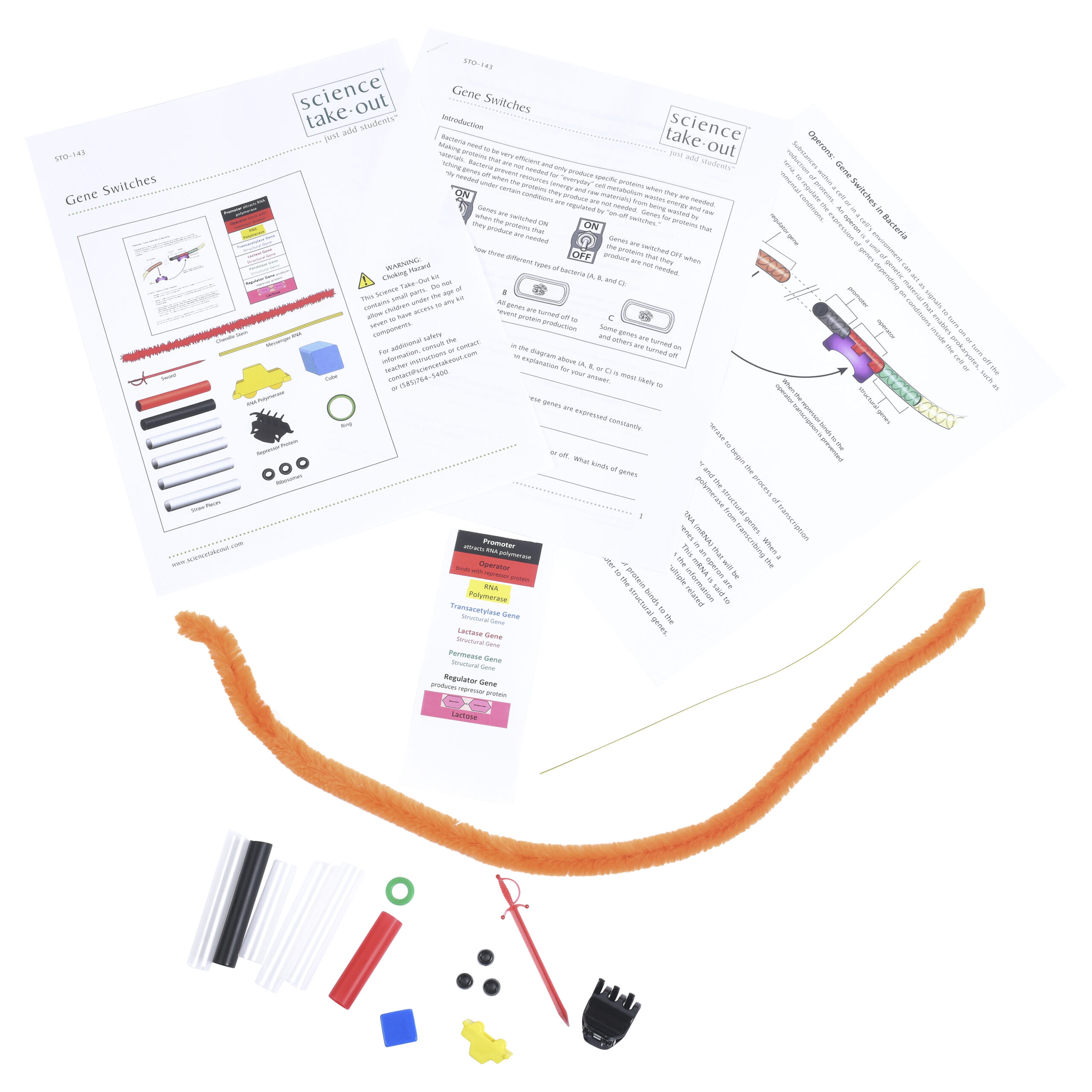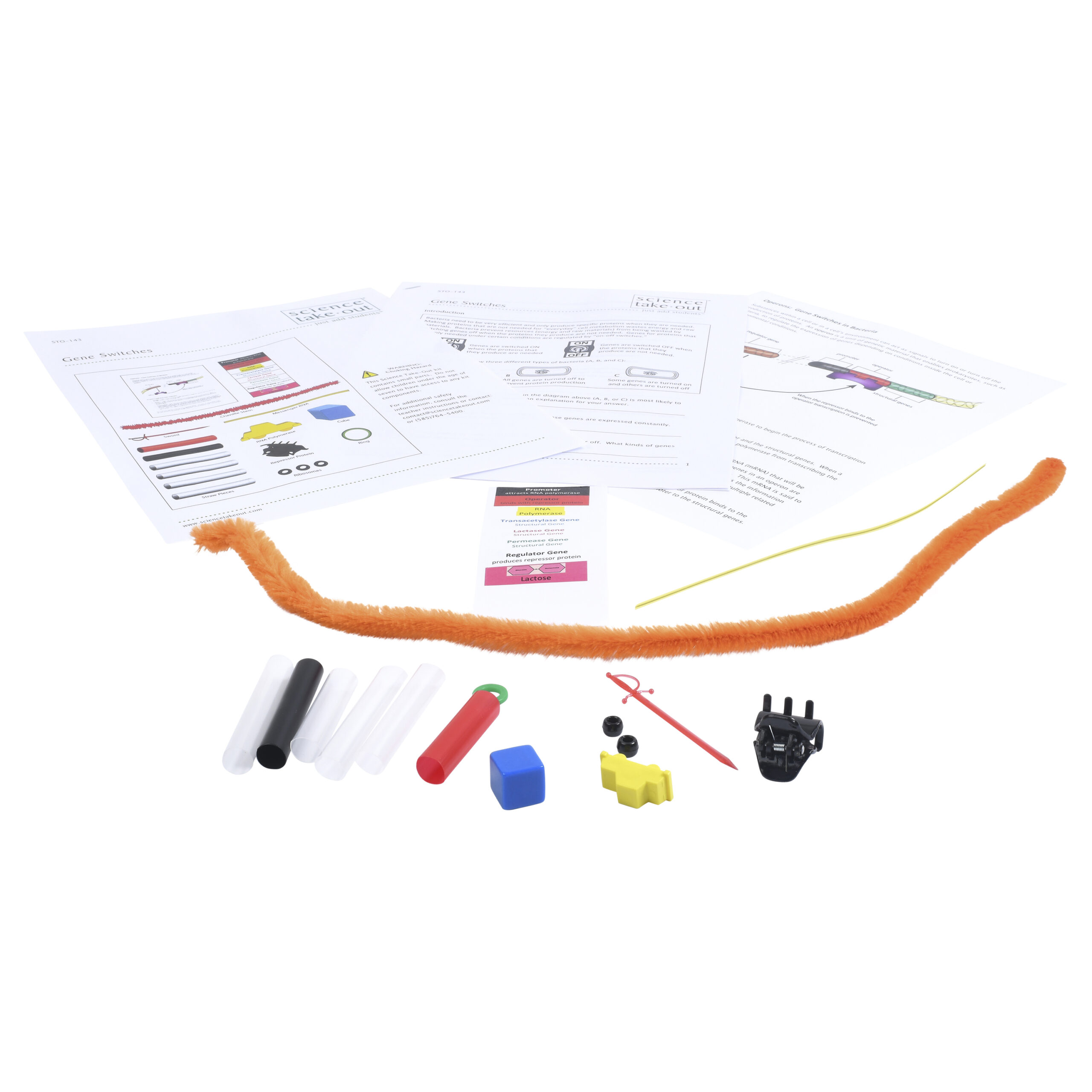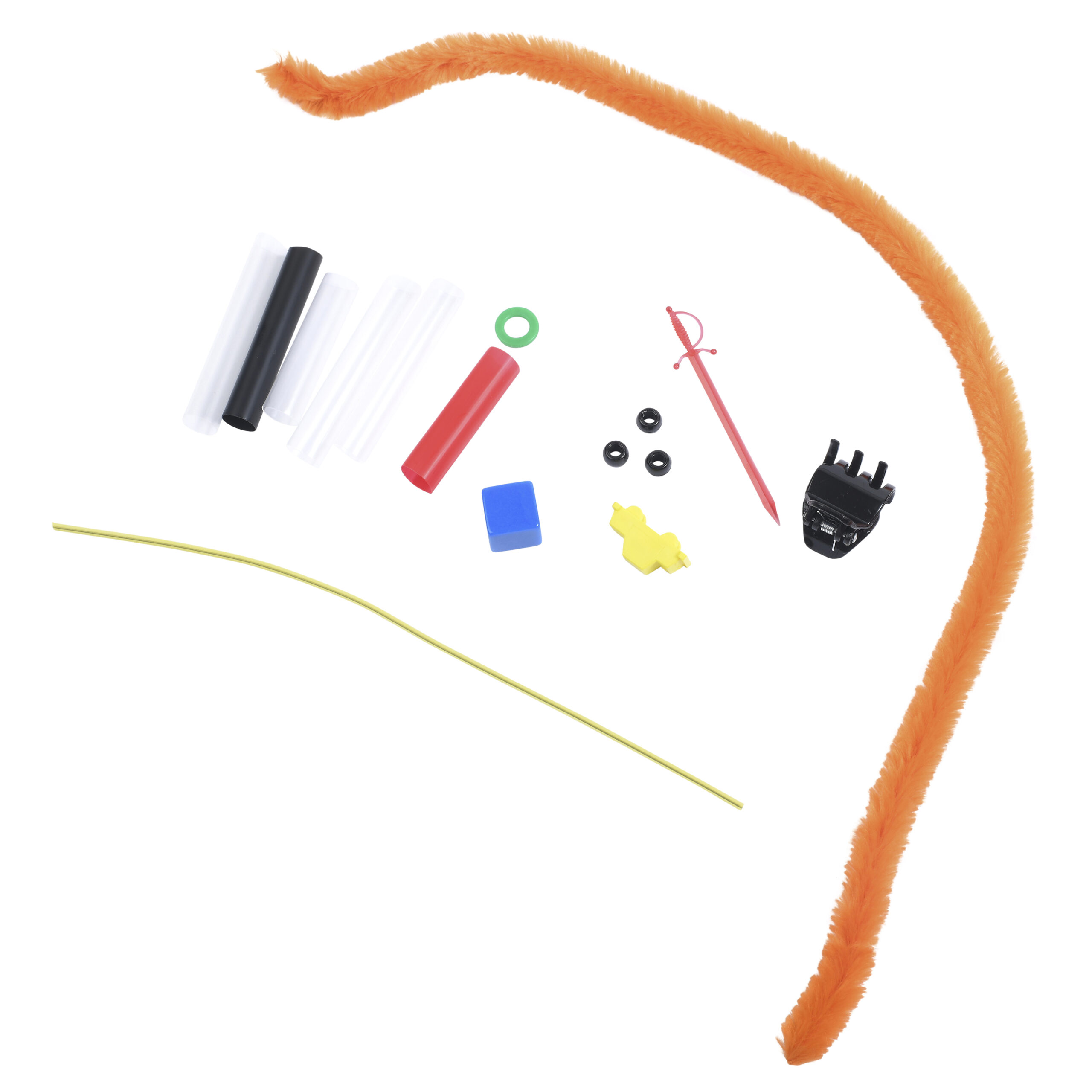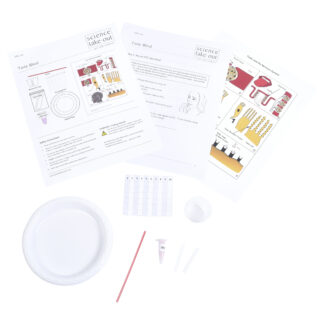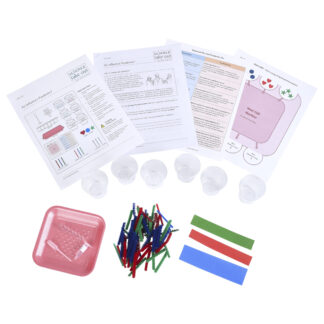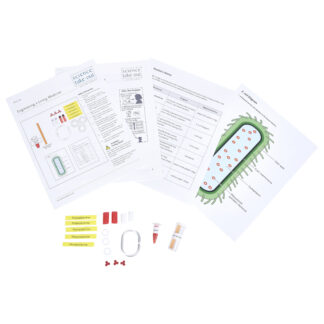Gene Switches
$12.95 – $83.95Price range: $12.95 through $83.95
Quantity Discounts Available! →
How do bacteria turn on and turn off genes?
Kit Includes
- Student instructions
- Large straw pieces (genes in an operon)
- Chenille stem
- Mini hair clip (repressor protein)
- Labels for parts of the operon
- Plastic car (RNA polymerase)
- Twist tie (messenger RNA)
- Beads (ribosomes)
- Plastic sword, ring, and cube (enzymes)
Quantity Discounts
Kits:
- 1 – 9 kits: $12.95 each
- 10 – 24 kits: $12.30 each
- 25+ kits: $11.66 each
Unassembled:
- 1 – 9 packs: $83.95 each
- 10+ packs: $79.75 each
Refills:
- This kit does not require refills since all its contents are reusable.
Correlation to Next Generation Science Standards (NGSS) Shop by NGSS »
Performance Expectations:
HS-LS1-1. Construct an explanation based on evidence for how the structure of DNA determines the structure of proteins which carry out the essential functions of life through systems of specialized cells.
Science & Engineering Practices
Developing and Using Models - Use a model to predict the relationships between systems or between components of a system.
Disciplinary Core Ideas
LS1.A: Structure and Function - Systems of specialized cells within organisms help them perform the essential functions of life. - All cells contain genetic information in the form of DNA molecules. Genes are regions in the DNA that contain the instructions that code for the formation of proteins, which carry out most of the work of cells.
Crosscutting Concepts
Structure and Function - Investigating or designing new systems or structures requires a detailed examination of the properties of different materials, the structures of different components, and connections of components to reveal its function and/or solve a problem.
